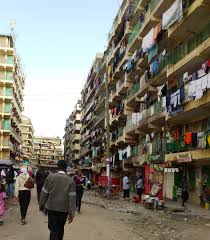|
Getting your Trinity Audio player ready...
|
By Prof. Alfred Omenya
Last week, between the 8th and the 12th of May 2017, the world gathered at the UN-Complex in Gigiri for the UN-Habitat Governing Council whose focus was on the Implementation of the New Urban Agenda (NUA).
Both governments and other stakeholders, commonly known as the Habitat Partners, arrived to start a 20-year journey of implementing a programme to develop our human settlements. The core of these discussions was on actual strategies for rolling out the ‘Quito Implementation Plan for the New Urban Agenda’ which was negotiated and agreed in 2016.

In the month of October last year, the City of Quito, Ecuador, played host to the Third United Nations Conference on Housing and Sustainable Urban Development – known as Habitat III. This was happening in the context of mounting urban challenges including “persistence of multiple forms of poverty, growing inequalities, environmental degradation, social and economic exclusion and spatial segregation. The international gathering agreed mainly on
The international gathering agreed mainly on the New Urban Agenda (NUA), which sets out a global strategy for sustainable urban development for the next 20 years. It also fleshed out a generic implantation plan, which is partly what brought the various delegates to Nairobi – to embark on the journey for implementation.
Concerns have been raised regarding the open-ended nature of the NUA’s agreement and its implementation plan. It was clear from last week’s Governing Council that both parties and partners of Habitat will pick and choose from a huge basket of resolutions, whatever is relevant for them. This picks and chooses approach, was already evident with last week, with some member states focusing on planning, others on urban development, and Africa on Human settlements generally. Kenyan Civil society was richly represented in the Governing Council
Kenyan Civil society was richly represented in the Governing Council through organizations like the Civil Society Urban Development Programme, Pamoja Trust, Centre for Economic Rights – Haki Jamii, We Effect, Habitat for Humanity, Mazingira Trust, Eco-Build Africa Trust, Africa Research Triangle, Groots Kenya, etc. The question was: In this huge basket, what is in it for civil society?
From presentations in the plenaries, submission of memoranda, projects presented, presentations in the side events, my deductions is that it would be prudent for Kenyan Civil Society to continue rallying around the theme of “Socially Inclusive Cities”. Why do I say so?
First, through the efforts of CSUDP, Haki Jamii, Eco-Build Africa Trust, Pamoja Trust and Mazingira Trust, working closely with International Coalition on the Right to the City, this issue found its way in the New Urban Agenda.

The right to the City gives all people the right to occupy, engage, and use the city for economic opportunities. Countries like Brazil wrote the right to the city into their Federal Law in 2001. Although many have questioned the ability of cities to implement this right given its collective nature and vague implication, Kenyan civil society embraced it because of its potential to include the urban poor in all aspects of the city, from planning, through the housing, provision of various infrastructure and services, to the urban economy.
NUA recognizes a number of specific needs to make cities more liveable for men and women, including the importance of gender-responsive housing and urban planning, the challenge of addressing gender-based violence and harassment, and the need for greater gender-responsive mobility.
The needs of persons with disabilities, the youth, and the elderly in urban development are also featured prominently in the document. The clarion call for Kenyan civil society is for policies and programs that do not segregate the urban poor; equitable access to socio-economic services in the city, a guarantee of dignified living for all, and economic empowerment of the urban poor, especially youth and women.
Kenyan Civil Society is working with the Government through the National Habitat Committee, the hope is that the two will gel and give Kenya truly progressive human settlements.
Prof. Alfred Omenya is an environmental Architect trained in architectural design, sustainable urbanism, and development. He is Principal Researcher, Eco-Build Africa.
This article was prepared for the Capacity Building & Training Facility for the Civil Society Urban Development Platform (CSUDP).













